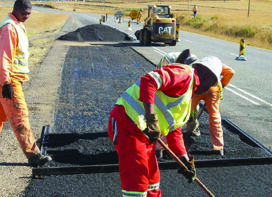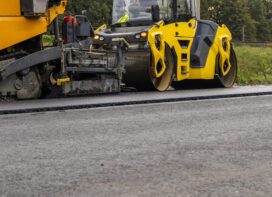

In its 77th year of independence, India, today, is at the cusp of greater economic ascent. As a result, the economy has leapfrogged from the world’s tenth largest economy (2014) to the fifth largest. Further, with this impressive growth expected to continue, India is poised to become the third largest economy by 2027, and a developed nation by 2047, marking its 100th year of independence. Karan Sethi, Senior Assistant Vice President, Invest India relooks at the country’s growth story
In the last ten years, India has invested over USD 1.2 trillion in building high quality infrastructure, aimed at bringing down the cost of logistics in the country and turning it into an economic powerhouse. A strong foundation and robust network has also aided in improving the ease of doing business and quality of life of the people, through universal uninterrupted power supply, availability of high-speed internet, and enhancing logistical connectivity.
This has been achieved through an optimal mix of Public Private Partnerships (PPP) and private investments in viable infrastructure projects, and budgetary investments in non-feasible but high social return projects. Moreover, to enable this staggering growth and the creation of infrastructure for tomorrow, India has been creating robust project/investment pipelines, world-class Development Finance Institutions, high-quality PPP contracts, conducive policies, and energising the industry’s execution capacity to deliver the scale of these projects.
National Infrastructure Pipeline and Future Investments
Through the National Infrastructure Pipeline (NIP), the government has successfully created a roadmap of infrastructure development for the Ministries, investors, and developers. It has set forth in motion India’s target to invest over USD 1.4 Trillion (2020-2025) in infrastructure development spanning the length and breadth of the country.
Further, considering the needs of the growth anticipated until 2030 and beyond, a recent report by CRISIL pegs the country’s infrastructure spending to expand by 25% during 2024-2030, in comparison with the NIP allocation.

Creating Infrastructure for New India – Landmark Projects
With a plan to double national highways in India to 200,000 kilometres by 2025, the ‘Bharatmala Pariyojana’ was launched as a holistic vision for developing 66,100 kilometres of additional road network including expressways, economic corridors, international and border roads. Remarkably, it has already aided in trebling the average pace of highway construction in the country from 12Km/day to 37Km/day in merely six years, with a target of achieving 50Km/day of average construction.
The Ministry of Road Transport and Highways is taking significant steps to reduce the country’s energy import bill and promote sustainability by aiming to achieve elevated levels of Electric Vehicles adoption by 2030 – 30% of private cars, 70% of commercial vehicles, and 80% of two-three wheelers. The Ministry has also been a frontrunner in adopting technologies across the sector.
In April 2023, the daily toll collection through the FASTag system achieved an all-time high of USD 24 Mn, with 1.16 crore transactions/day, marking a remarkable achievement in just over two years since implementation (Feb 2021). Further, the sector has also witnessed the mandatory employment of drones to enhance transparency in the monitoring of projects and the use of 3D automated machine guidance technology to speed up the pace of highway construction. In another recent highlight, the country witnessed the inauguration of its longest sea bridge, Mumbai Trans Harbour Link, an almost 22 km long engineering megastructure, expected to cater to more than 70,000 vehicles every day.

Aviation:
Fuelled by a growing working class and middle class, India’s aviation sector was clocking a consistent double-digit growth during the pre-COVID period, with the domestic aviation market set to become the third largest aviation market in the world by 2025. Moreover, the government’s Regional Connectivity Scheme ‘UDAN – Ude Desh Ka Aam Naagrik’ has been instrumental in connecting the aspirational Tier II and Tier III cities. While only 74 airports were created in 65 years, the government either modernised or built 75 airports, waterdromes and helicopters in the last 10 years, apart from adding 425 new air routes, potentially reshaping travel in India. With passenger traffic expected to treble to 420 Mn/annum by 2030, around 90 new airports are expected to be built, and the aircraft fleet size is forecasted to double from 700 to 1,400.
Two landmark projects in the sector will be the Noida International Airport and the Navi Mumbai International Airport, with capacities to handle 70 Mn and 60 Mn passengers per annum, respectively. It is also pertinent to note that India is on a path to deliver a seamless and hassle-free travel experience. The country has already embarked on Digi Yatra, a biometric-focused initiative that uses facial recognition at airports to provide a digital-first, contactless passenger experience, and SITA, a first-of-its-kind biometric boarding experience.
Railways:
With a target of moving 34 Mn passengers/day and transporting 9 Mn tons freight/day by 2030, Indian Railways has quintupled the average pace of commissioning new lines (2021 versus the period 2009-14). While 5,200 Km of track was added last year, another 5,500 Km was added in the current year, almost the size of the entire track length in a country like Switzerland.
The national transporter is also working on marquee projects such as Dedicated Freight Corridors and High-Speed Rail, aimed at transforming both passenger travel and freight movement across the country. Some of the significant architectural achievements in the sector have been the world’s highest railway bridge (Chenab) and the country’s first underwater tunnel (for Kolkata Metro).
Indian Railways has also prioritised passenger comfort by introducing the modern, made in India, Vande Bharat Trains. Looking ahead, India is expected to manufacture at least 1,000 new generation trains in the coming years, along with undertaking one of the most ambitious infrastructure overhaul projects in the world – the Amrit Bharat Station Scheme. Aimed at modernising and redeveloping more than 1200 railway stations into city centres with updated amenities, almost USD 30 Bn is estimated to be spent on 553 stations.
The Railways has also made other moves on the technology front to provide comfort and convenience to passengers including installing Wi-Fi at railway stations, implementing a robust ticket booking website enabling GPS enabled train tracking system, and creating a portal for booking freight/parcel services on the national transporter.

Coastline and Waterways:
Focused on unlocking the true potential of India’s vast 7,500 Km coastline and waterways, to rationalise the cost of logistics and boost growth in EXIM cargo, the Ministry of Ports, Shipping and Waterways launched ‘SagarMala’ and the Maritime India Vision 2030. These programs are aimed at creating world-class mega ports and transhipment hubs, modernizing existing ports, augmenting connectivity, and creating port-centric economic clusters.
Significant plans have been drawn for the development of six mega ports in the country under the Maritime Amrit Kaal Vision 2047, with four ports to have capacity of handling more than 300 MTPA and two (Deendayal and Tuna Tekra Port Cluster and Jawaharlal Nehru – Vadhavan Port) with capacity of 500 MTPA. The sector has also seen significant projects being created – the New Dry Dock at Cochin Shipyard Limited (CSL) – capable of handling largest of carriers, the International Ship Repair Facility also at CSL – India’s first fully -developed pure ship repair facility, VOC Port at Tuticorin announced as the country’s first green hydrogen hub, and the launch of the country’s first green hydrogen fuel cell inland waterway vessel.
The transformation of this industry will be a shot in the arm to India’s ambitions of becoming the factory to the world and doubling merchandise exports to USD 1 Trillion by 2030. The sector is also observing the adoption of sustainable modes such as inland waterways and the country’s first water taxi in Kochi.
Logistics:
The country’s efforts to improve logistics efficiency have been acknowledged in the 2023 World Bank Logistics Performance Index report, wherein the Logistics Data Bank has been attributed with lowering the dwell time to 2.6 days, contributing to a remarkable reduction of delays. For example: with the introduction of cargo tracking, dwell time in the eastern port of Visakhapatnam fell from 32.4 days in 2015 to 5.3 days in 2019.
It is also pertinent to note that India is undergoing a rapid rate of urbanization (40% of the total population in urban areas by 2030, increasing from 33% in 2020), and the government is creating significant urban physical infrastructure by leveraging technologies, to transform cities into centres of economic growth. In this regard, the Smart Cities Mission has resulted in the adoption of surveillance, sustainable waste and water management solutions, and urban transit systems.
The total length of the metro network in the country is expected to grow ten-fold to 5,000 Km in the next two decades. Taking this to the next level is the Regional Rapid Transit System project expected to stitch the entire National Capital Territory region into one economic centre.
Similarly, technology-based institutional mechanisms have been put in place to address the coordination issues among various departments of the government, to reduce time delays and cost overruns that often impact large infrastructure projects. To this effect, the Project Monitoring Group has played a key role in resolving inter-ministerial issues. In addition, the Honourable Prime Minister launched the ‘PM GatiShakti – National Master Plan for Multi-Modal Connectivity’ aimed at leveraging technology to improve the planning and execution of infrastructure projects, by catalysing integration between government authorities, to provide ‘Gati’ or speed to such developments.
Infrastructure development in India is undergoing a transformation, driven by a clear closely linked nexus to the nation’s progress, and the numerous measures taken by the government to enable future development. This presents a plethora of limitless opportunities to the private sector to be part of India’s growth story.
 TrafficInfraTech Magazine Linking People Places & Progress
TrafficInfraTech Magazine Linking People Places & Progress


